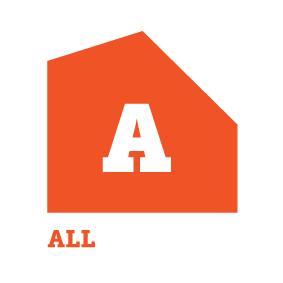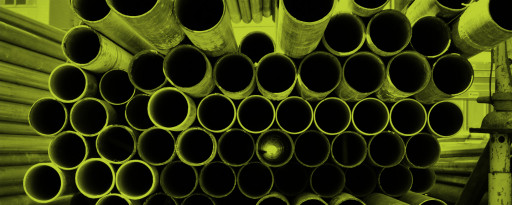Working with asbestos? Rules are changing
Codewords 71: March 2016
The rules changed on 4 April 2016.

Are you running a business (building, roofing, plumbing or demolition for example), with workers who remove asbestos as part of their job? Here’s a heads-up about upcoming changes to asbestos-related work.
Asbestos regulations are being updated to bring New Zealand into line with other countries. With more than 170 New Zealand workers dying each year from asbestos-related diseases, our work practices need to improve.
Under the new regulations, coming in on 4 April 2016, removing more than 10m2 of bonded asbestos (non-friable) in one job will require a licence. The licence will be issued by government health and safety agency WorkSafe New Zealand. Licences cannot be issued until 4 April, but WorkSafe is interested in hearing from potential licence holders now. This will help speed up the licensing process for your business.
New nationwide licensing system for asbestos removal
The new licensing system for asbestos-related work is aimed at ensuring people working with asbestos have the necessary skills and experience to keep themselves, and others, safe.
| New licences | What asbestos can be removed? | Who will need this licence? |
|---|---|---|
| Class A | Any type or quantity of asbestos or asbestos containing material (ACM) including: - Any amount of friable asbestos or ACM Any amount of asbestos. |
This is the licence you will need if you are removing any amount of friable (powdery or has potential to become powdery) asbestos. |
| Class B | Asbestos contaminated dust or debris (ACD) associated with removing any amount of non-friable asbestos or ACM. | This is the licence you will need if you are removing more than 10m2 of non-friable asbestos. |
| No licence required | Up to and including 10m2 of non-friable asbestos or ACD associated with the removal of that amount of non-friable asbestos, cumulatively over the course of the removal project. ACD that is not associated with the removal of friable or non-friable asbestos and is only a minor contamination. |
What do I need to do?
Please register your interest with WorkSafe if your business is likely to require a ‘Class B asbestos licence’ next year. (You are not required to inform Worksafe about Class A licenses at the present time).
You can register using the registration form on our website(external link). You’ll be asked for:
- The name of your business
- The size of your business (number of employees)
- The type of business you operate (building, roofing etc)
- The town or city your business operates in
- Contact details.
-
Any amount of non-friable (bonded) asbestos or asbestos containing material
Find out more about the new rules for work involving asbestos, including indicative licensing fees, at www.worksafe.govt.nz(external link)
I have a Certificate of Competence for restricted asbestos work. What do I need to do?
If you have a current Certificate of Competence, you don’t need to do anything yet. Your certificate will allow you to work under the new asbestos regulations (under the categories listed on your certificate), until your certificate expires. At that point you will need to apply for one of the new licences or to work on another business’s licence.
WorkSafe will be writing to all Certificate of Competence holders about the new regulations in November.
Asbestos may be found in any of the following places:
- Roofs
- Ceilings
- External cladding and eaves
- Interior walls and finishes
- Floors
- Insulation and pipes
- Flues and seals on wood burners
- Fuse boards
- Fences
- Excavations (pipes)
Quiz: show-you-know
- Anyone removing 15m2 of non-friable asbestos containing material will need an asbestos removal licence from April next year. True or false?
- Which class of asbestos removal presents the greater risk, Class A (friable) or B (non-friable)?
- The new asbestos removal licences will be held by each individual person. True or false?
- If a Person Conducting a Business or Undertaking (PCBU) applies for a Class B licence (to remove non-friable asbestos or ACM) on 4 April, it has six months to satisfy WorkSafe that its supervisors are competent. True or false?
- Only a licenced assessor may provide a clearance inspection for Class A removal work. True or false?
Check answers
1. Anyone removing 15m of non-friable asbestos containing material will need an asbestos removal licence from April next year. True or false?
- True.
- If 10m or less of ACM is removed over the course of the whole project, this doesn’t require a licence. Greater than 10m will require a licence.
2. Which class of asbestos removal presents the greater risk, Class A (friable) or B (non-friable)?
- Class A (friable).
- Friable asbestos is powdery or has the potential to become powdery and be released into the air. Once breathed in such fibres may pass deep into the lungs, or, if swallowed, into the digestive tract. Once they are trapped in the body, the fibers can cause health problems.
3. The new asbestos removal licences will be held by each individual person. True or false?
- False.
- A Person Controlling a Business or Undertaking (PCBU) will apply for and hold the new licence. A self-employed individual can be a PCBU.
4. If a Person Conducting a Business or Undertaking (PCBU) applies for a Class B licence (to remove non-friable asbestos or ACM) on 4 April, it has six months to satisfy WorkSafe that its supervisors are competent. True or false?
- True, but the PCBU must have completed their application for a Class B licence to get the extra time.
5. Only a licenced assessor may provide a clearance inspection for Class A removal work. True or false?
- False.
- A ‘competent person’ may provide clearance for Class A removal work during the two-year transitional period starting from 4 April 2016. From April 2018 a licenced assessor must be used.
